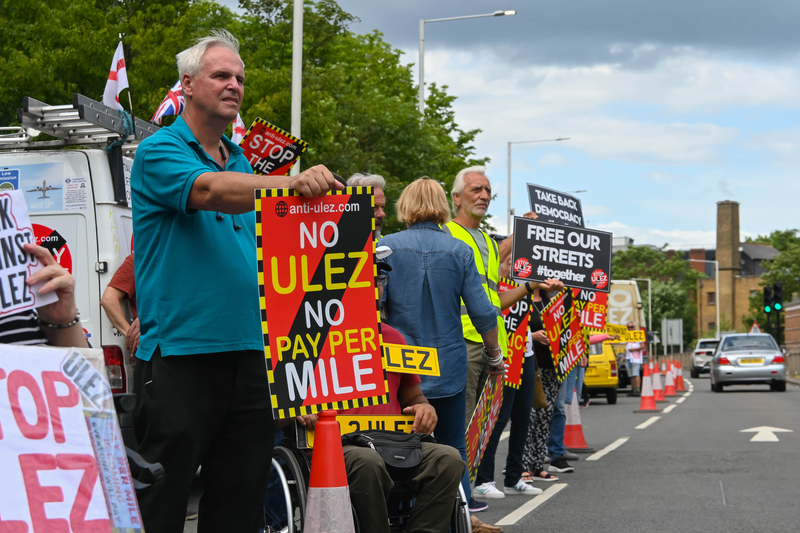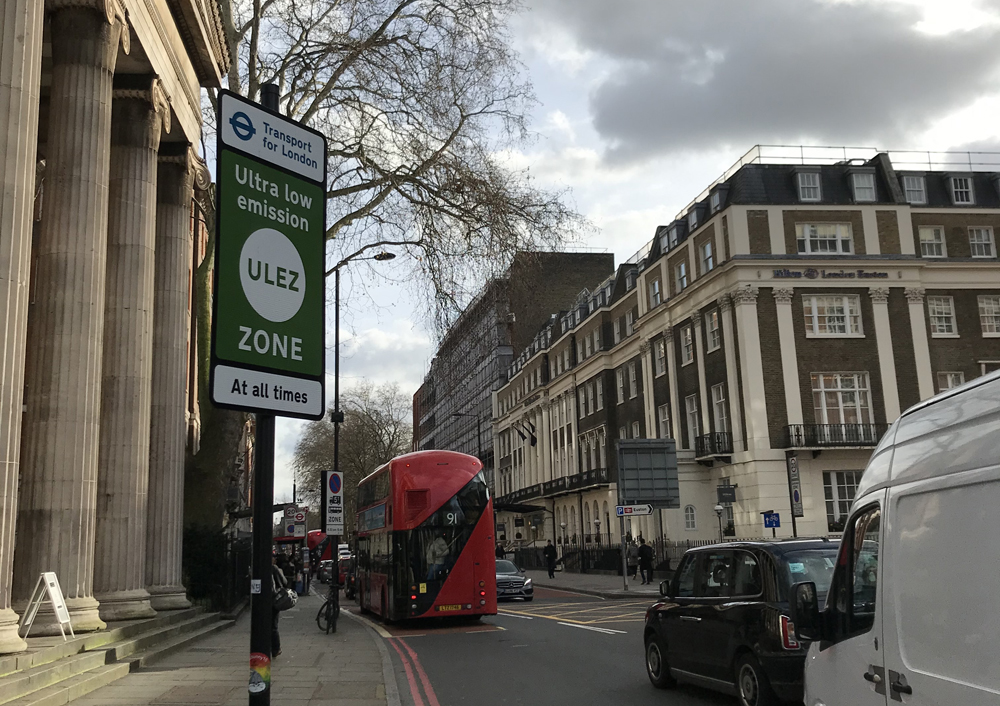A new report, produced by experts at King's College London, for the first time quantifies the health and economic effects of the air pollutant nitrogen dioxide (NO2), where all previous studies have focused on particulate matter (PM2.5).
Combined together the effects of both pollutants reveal a higher health impact than previously estimated after taking into account this further pollutant. The study also found that nearly half the health impacts are caused by air pollution outside London such as diesel
A new report, produced by experts at King's College London, for the first time quantifies the health and economic effects of the air pollutant nitrogen dioxide (NO2
), where all previous studies have focused on particulate matter (PM2.5).
Combined together the effects of both pollutants reveal a higher health impact than previously estimated after taking into account this further pollutant. The study also found that nearly half the health impacts are caused by air pollution outside London such as diesel fumes and industrial emissions transported from the Continent.
The report focuses on 2010, as this is the most recent available ‘base’ year for the London Atmospheric Emission Inventory which provides an understanding of air quality in the city. Projections from 2008, 2012, 2015 and 2020 are also included based on the data from 2010.
Key findings from the study indicate that in 2010 nearly half the health effects of long term exposure to air pollution were caused by pollution from outside London, including 75 per cent of cardiovascular hospital admissions associated with PM2.5. In 2010 there was the equivalent of 5,900 deaths associated with NO2 long term exposure.
At the same time the deaths associated with long-term exposure to PM2.5 were updated. The equivalent number of PM2.5 deaths has decreased from 4,300 (in 2008 based on 2006 concentrations) to 3,500 (in 2010).
The study for the first time combined the PM2.5 and NO2 figures to create a total figure of 9,500 equivalent deaths attributed to air quality in 2010, but based on King’s projections, this will have decreased significantly in 2012 and in 2015, and is expected to be accelerated by the ULEZ in 2020.
Reductions in pollutant levels between 2010 and 2020 are expected to result in nearly up to four million life years being saved. This excludes the expected impact of the Ultra Low Emission Zone, which will lead to significant reduction in the number of people living in areas of poor air quality (where levels of NO2 exceed legal limits) by 72 per cent in central London and 54 per cent London-wide.
There have also been average reductions in NO2 levels at roadside sites of more than 12 per cent (with weather effects removed).
The report also includes a 2010 borough breakdown highlighting the estimated number of attributable deaths associated with pollutants in each area based on the local concentration and numbers in the local population.
As this data is five years old, it does not include the impact of the many measures introduced by London Mayor Boris Johnson since 2010 including tightening Low Emission Zone standards, delivering more than 1,300 hybrid buses and introducing age limits for taxis, nor the expected benefits of the Ultra Low Emission Zone in 2020. However, as a result of the policies by 2020 it is expected up to nearly four million life years will be saved for the London population over a lifetime. The mortality burden associated with air pollution is expressed as ‘life-years lost’ across the population as a result of deaths (a ‘life-year’ is one year lost for one person).
Based on this detailed information, Johnson has renewed his call on the Government and the EU to urgently take further action to improve air quality in London, across the UK and Europe. He believes that given an improved understanding of the health effects associated with NO2 , as a first step, the Government must now rule out expansion of Heathrow.
Johnson said: “This is a snapshot of the true impact of air pollutants on our health. My greatest priority remains to protect the well-being and environment of Londoners, and this scientific evidence will ensure we have all the information needed to continue delivering comprehensive measures that bring real change.”
He went on to say that, despite criticism of the measures he has implemented to reduce London’s pollution, the study shows imperatively why these bold measures are required.
He went on, “I need the help and strong support of the Government and the EU to effectively win London’s pollution battle and target the enormous amount of toxic air transported into our great capital internationally.”
Dr Heather Walton from the Environmental Research Group at King’s College, London, author of the report said: “The health evidence on the health effects of nitrogen dioxide has strengthened in recent years, including evidence linking long-term exposure to nitrogen dioxide with mortality. It is now thought that there is an additional effect beyond that previously quantified for the effects of long-term exposure to PM2.5.
“This report quantifies the possible maximum size of this additional effect in London in 2010, expressed as loss of life years and equivalent deaths, acknowledging uncertainties such as the contribution from traffic pollutants other than NO2 . It is important that these types of calculations are funded, published and debated to ensure the health benefits of policies to reduce emissions of air pollutants such as nitrogen dioxide are fully recognised and used to design the best policies for the future.”
Alongside the King’s study, London has also put in place other hard-hitting measures to tackle pollution in the capital, including US$101 million in funding to help taxi drivers to reduce emissions and support the roll out of 9,000 zero emission capable taxis by 2020 and implementing the Ultra Low Emission Zone. Taken together these measures are expected to ensure that 80 per cent of central London meets EU legal limits for NO2 by 2020.
Combined together the effects of both pollutants reveal a higher health impact than previously estimated after taking into account this further pollutant. The study also found that nearly half the health impacts are caused by air pollution outside London such as diesel fumes and industrial emissions transported from the Continent.
The report focuses on 2010, as this is the most recent available ‘base’ year for the London Atmospheric Emission Inventory which provides an understanding of air quality in the city. Projections from 2008, 2012, 2015 and 2020 are also included based on the data from 2010.
Key findings from the study indicate that in 2010 nearly half the health effects of long term exposure to air pollution were caused by pollution from outside London, including 75 per cent of cardiovascular hospital admissions associated with PM2.5. In 2010 there was the equivalent of 5,900 deaths associated with NO2 long term exposure.
At the same time the deaths associated with long-term exposure to PM2.5 were updated. The equivalent number of PM2.5 deaths has decreased from 4,300 (in 2008 based on 2006 concentrations) to 3,500 (in 2010).
The study for the first time combined the PM2.5 and NO2 figures to create a total figure of 9,500 equivalent deaths attributed to air quality in 2010, but based on King’s projections, this will have decreased significantly in 2012 and in 2015, and is expected to be accelerated by the ULEZ in 2020.
Reductions in pollutant levels between 2010 and 2020 are expected to result in nearly up to four million life years being saved. This excludes the expected impact of the Ultra Low Emission Zone, which will lead to significant reduction in the number of people living in areas of poor air quality (where levels of NO2 exceed legal limits) by 72 per cent in central London and 54 per cent London-wide.
There have also been average reductions in NO2 levels at roadside sites of more than 12 per cent (with weather effects removed).
The report also includes a 2010 borough breakdown highlighting the estimated number of attributable deaths associated with pollutants in each area based on the local concentration and numbers in the local population.
As this data is five years old, it does not include the impact of the many measures introduced by London Mayor Boris Johnson since 2010 including tightening Low Emission Zone standards, delivering more than 1,300 hybrid buses and introducing age limits for taxis, nor the expected benefits of the Ultra Low Emission Zone in 2020. However, as a result of the policies by 2020 it is expected up to nearly four million life years will be saved for the London population over a lifetime. The mortality burden associated with air pollution is expressed as ‘life-years lost’ across the population as a result of deaths (a ‘life-year’ is one year lost for one person).
Based on this detailed information, Johnson has renewed his call on the Government and the EU to urgently take further action to improve air quality in London, across the UK and Europe. He believes that given an improved understanding of the health effects associated with NO2 , as a first step, the Government must now rule out expansion of Heathrow.
Johnson said: “This is a snapshot of the true impact of air pollutants on our health. My greatest priority remains to protect the well-being and environment of Londoners, and this scientific evidence will ensure we have all the information needed to continue delivering comprehensive measures that bring real change.”
He went on to say that, despite criticism of the measures he has implemented to reduce London’s pollution, the study shows imperatively why these bold measures are required.
He went on, “I need the help and strong support of the Government and the EU to effectively win London’s pollution battle and target the enormous amount of toxic air transported into our great capital internationally.”
Dr Heather Walton from the Environmental Research Group at King’s College, London, author of the report said: “The health evidence on the health effects of nitrogen dioxide has strengthened in recent years, including evidence linking long-term exposure to nitrogen dioxide with mortality. It is now thought that there is an additional effect beyond that previously quantified for the effects of long-term exposure to PM2.5.
“This report quantifies the possible maximum size of this additional effect in London in 2010, expressed as loss of life years and equivalent deaths, acknowledging uncertainties such as the contribution from traffic pollutants other than NO2 . It is important that these types of calculations are funded, published and debated to ensure the health benefits of policies to reduce emissions of air pollutants such as nitrogen dioxide are fully recognised and used to design the best policies for the future.”
Alongside the King’s study, London has also put in place other hard-hitting measures to tackle pollution in the capital, including US$101 million in funding to help taxi drivers to reduce emissions and support the roll out of 9,000 zero emission capable taxis by 2020 and implementing the Ultra Low Emission Zone. Taken together these measures are expected to ensure that 80 per cent of central London meets EU legal limits for NO2 by 2020.












